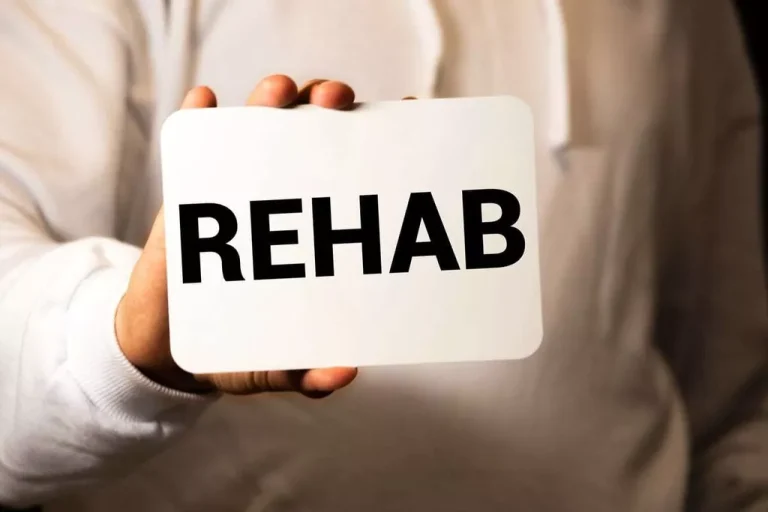
Few differences by gender served emerged regarding sociodemographics, alcohol outlets or accessibility. When differences emerged, they were largely between coed houses and houses that served either men or women. Compared to men’s houses, coed SLHs were in neighborhoods with a lower percentage of non-Whites (33% vs 42%) and with higher median property values (876,664.8 vs https://ecosoberhouse.com/ 640,360.9). They had fewer self-help groups within a mile than women’s houses (2.1 vs 3.5) and on average were farther from the nearest self-help group than both men’s and women’s houses. Coed houses also had lower walkability scores than both men’s and women’s houses. We also included a measure of residential instability (i.e., percent of renter-occupied housing units).
What Are the Differences between Halfway Houses and Other Sober-Living Houses?

The resident requests the General Manager put them on the waiting List for a Phase II house which usually has a thirty to ninety day wait. For example, meeting cards to validate 12-step meeting attendance are not required, there are no curfew requirements, and overnight guests are permitted twice per week. Study procedures included recruiting residents for the research within their first week of entering the SLH. All participants signed informed consent documents and were informed that their responses were confidential. A federal certificate of confidentiality was obtained to further protect study confidentiality. We expected residents entering SLH’s who had established sobriety would maintain that sobriety, while those with recent substance use would show significant improvement.

Freestanding SLHs
In fact, one of the most frustrating issues for addiction researchers is the extent to which interventions that have been shown to be effective are not implemented in community programs. We suggest that efforts to translate research into treatment have not sufficiently appreciated how interventions are perceived and affected by various stakeholder groups (Polcin, 2006a). We therefore suggest that there is a need to pay attention to the community context where those interventions are delivered.
Main Findings
Our purpose here is to summarize the most salient and relevant findings for SLHs as a community based recovery option. We then expand on the findings by considering potential implications of SLHs for treatment and criminal justice systems. We also include a discussion of our plans to study the community context of SLHs, which will depict how stakeholder influences support and hinder their operations and potential for expansion. It is important to note that social model strategies can be used to encourage the use of social sober living blog model principles to enhance the use of local services. For example, Polcin, Korcha, and Bond (2015) described how SLH residents with psychiatric disorders can provide support to one another in terms of managing symptoms and providing information about local mental health services. In addition to sharing practical information about where services are located and how to access them, they can also share personal experiences (i.e., experiential learning) that might help residents be better prepared for what to expect.

While a sober living house doesn’t offer individual or group counseling, it offers structure and support to help you maintain your sobriety. Additionally, maintaining your sobriety typically requires a home that is free of substances. Sober living facilities are often thought of as a sober person’s pipeline to life in mainstream society.

Sober House Directory

Daily Activities in Sober Living Homes
- As SLHs gain more recognition as an evidence-based recovery option, funding SLH stays will remain critical, especially for those who might enter SLHs only because they are seeking affordable housing.
- Those who live in these houses rent rooms indefinitely and live a life in accordance with their responsibilities, like work and school.
- Although there are similarities between SLH’s and other residential facilities for substance abusers, such as “halfway houses,” there are important differences as well.
- Providers should consider scholarship programs, e.g., with funding from prior house residents, the broader recovery and/or local community, or others interested in supporting individuals in recovery.
- For example, meeting cards to validate 12-step meeting attendance are not required, there are no curfew requirements, and overnight guests are permitted twice per week.
Options Recovery Services (ORS)
- These homes can offer an in-between option for individuals after they complete a treatment program and before they return to their homes and lives.
- To protect the confidentiality and maintain the privacy of the SLH addresses, a set of random points offset a specific distance from the original latitude and longitude of each SLH were created within the same Census tract as the original address.
- Ethics approval was obtained from the Institutional Review Board of the Public Health Institute (Reference I17-006).
- Examples include internal recovery capital assets that residents acquired during their time in the SLH, such as self-confidence, self-efficacy, empowerment, spirituality, citizenship, and purpose in life.
- These houses tend to have a residents council or a similar mechanism for resident empowerment and input into house operations.
- Sober living homes for the LGBTQ+ help them recover by focusing on self-acceptance, peer support, and mental health.
- How long you stay depends on the sober-living facility and your progress in recovery.
- In essence, sober living gives you the tools and support necessary for recovery, laying a foundation for a stable, sober future.
- Whatever the source of the referral, take a tour of the facility and talk to the people living there to decide if it’s the right fit for you.
- The House Manager is a liaison between the residents and the General Manger and advocates for residents.
- Despite the finding that 56% had left the houses by the 6 month time point, 40% of the sample reported complete abstinence from alcohol and drugs between baseline and 6-month follow up.
- While a sober living house doesn’t offer individual or group counseling, it offers structure and support to help you maintain your sobriety.